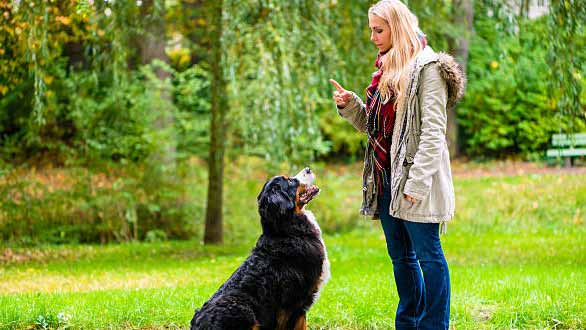Training your dog can be a rewarding experience that strengthens the bond between you and your furry friend. Whether you have a new puppy or an older dog, using professional training techniques can help you establish good behavior, improve obedience, and ensure a happy and well-adjusted pet.
1. Positive Reinforcement
Canine behavioral training often uses positive reinforcement as a key technique to encourage desired behavior. Instead of punishing your dog for bad behavior, focus on rewarding them for good behavior. This can be done through treats, praise, or playtime. By reinforcing positive actions, your dog will associate them with positive outcomes, increasing the likelihood of those behaviors being repeated.

Image Source- Google
2. Clicker Training
Clicker training is another effective technique used by professional trainers. The clicker is a small device that makes a distinct sound when pressed. It serves as a communication tool to mark the desired behavior at the exact moment it occurs. By pairing the sound of the clicker with positive reinforcement, such as treats or praise, your dog will learn to associate the sound with a reward. This technique allows for precise timing, making it easier for your dog to understand what behaviors are being rewarded.
3. Consistency and Patience
Consistency and patience are crucial when training your dog. Set clear rules and boundaries, and ensure that all family members are consistent in their expectations and commands. Dogs thrive on routine and clear communication, so it's important to establish consistent training methods. Additionally, training takes time and effort, so be patient with your dog. Each dog has its own learning pace, and it's important to give them time to understand and adjust to new commands.
4. Socialization
Socialization is an essential aspect of training for well-rounded dogs. Expose your dog to various environments, people, and other animals from an early age. This helps them become comfortable and confident in different situations, reducing the likelihood of fear or aggression. Socializing your dog also allows them to develop proper manners when interacting with other dogs and people.
5. Exercise and Mental Stimulation
Regular exercise and mental stimulation are vital for a happy and well-behaved dog. Dogs have a lot of energy, and if they don't have an outlet for it, they may exhibit destructive behavior. Make sure your dog gets enough physical exercise through walks, runs, or playtime at a dog park. Additionally, provide mental stimulation through puzzle toys, obedience training, or interactive games. A tired dog is generally a well-behaved dog.
6. Problem Solving
Professional trainers often use problem-solving techniques to address undesirable behaviors. Instead of punishing your dog, try to understand the root cause of their behavior. Is your dog acting out of fear, boredom, or frustration? By identifying the underlying cause, you can address the problem more effectively. For example, if your dog is digging in the yard out of boredom, provide them with stimulating toys or designate an area where they are allowed to dig.